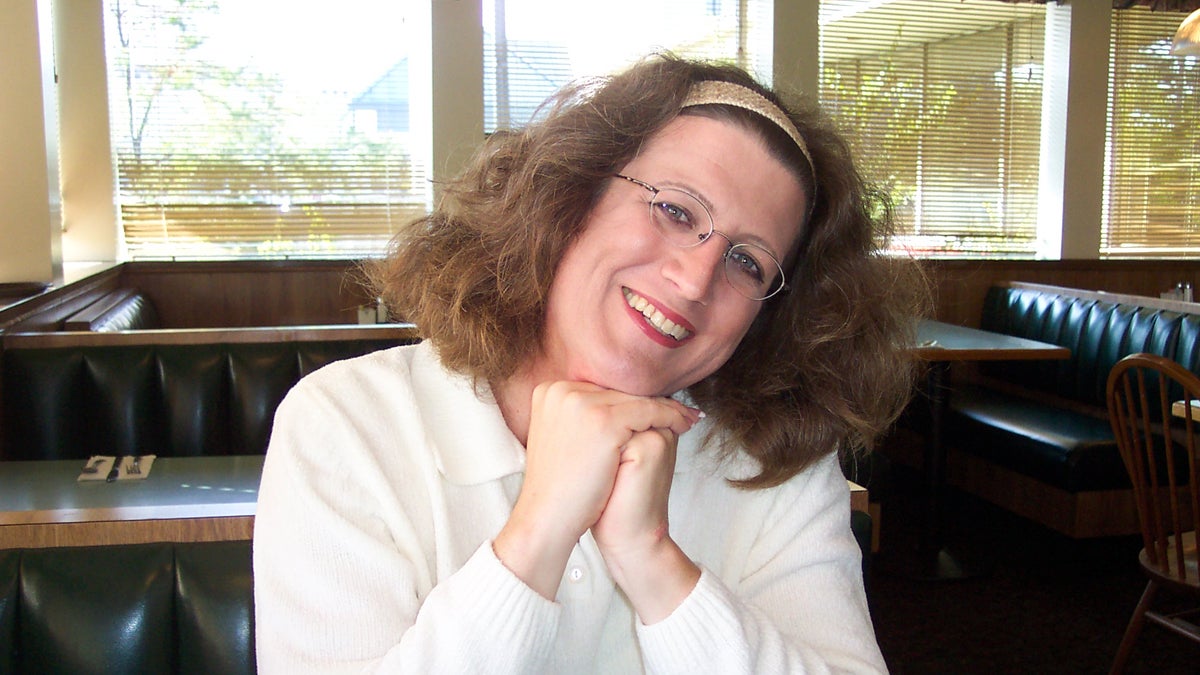What makes a face feminine? Surgeon says it’s more than skin deep
Listen
Renee Baker after facial feminization surgery. (Photo courtesy of Renee Baker)
Have you ever thought about what makes a face feminine? According to one of the surgeons who pioneered facial feminization surgery, what makes a face feminine isn’t easy to define.
Sixteen years ago a transgender woman came to Dr. Jeffrey Spiegel and asked for help. She wanted to look more feminine.
“I went to the medical literature and looked up what procedures exist to do this,” Spiegel says, “And there was nothing.”
So, Spiegel improvised, and the woman liked it.
“I was happy that she was happy and I thought that was the end, but then she told someone and she told someone and she told someone, and pretty soon it became a very busy part of my practice,” he says.
In October, Spiegel operated on people from a dozen states and seven countries. Their pilgrimage to his Boston office is noteworthy because what they’re seeking — some piece of femininity — is a bit elusive. Spiegel says what makes a face feminine and beautiful is easy to generalize, hard to pin down.
“It ends up being very deep things,” he says. “It ends up being the bones. We hear beauty is only skin deep; it’s not. It has to do a lot with the bones. When we change the face, I need to change the bones. And then the skin is almost like clothing. If a woman puts on a man’s shirt it still looks like a woman, similarly if a man puts on women’s clothing it looks like a man in woman’s clothing. So the skin, if it sits on the right way on the facial structures, we start to get the right cues.”
Almost a decade ago, Renee Baker flew from Dallas to Boston to have Spiegel, as she puts it, take the masculine edge off her face. Baker, a licensed counselor who primarily works with gender and sexuality issues used savings from her former job as an engineer and pulled together $18,000 dollars.
“I guess my cheeks are just fuller, my face is rounder, the distance between my eyebrows and my hairline is about a half inch shorter cause they raise your brows and all that, so my eyes are a lot more open, and visible, I kind of like that part,” Baker says.

Renee Baker before and after her facial feminization surgery. (Photo courtesy of Renee Baker)
Her bright blue eyes are the same, but, everything else seems softer. Dr. Spiegel says there is no formula to sculpt a “feminine” nose or eye. You can’t just focus on one feature, you have to take into account the entire face. This is a technique the best artists and architects use. For example, the columns on the Parthenon in Greece aren’t actually straight (they swell slightly in the center), but they appear to be because of optical illusions. Plastic surgeons too are creating illusions with light to make faces appear more feminine.
“One of the key differences between men’s and women’s faces and less attractive and more attractive faces is how light reflects off the face,” Spiegel says.
Our brains, he says, are processing shadows and reflections and that’s what we’re using to gauge femininity and attractiveness. He says women’s faces have a lot of light that bounces off the eyes and the mouth. Why?
“Women have larger cheekbones,” he says, “which acts like a solar reflector it bounces light into the eyes. They have small brows, which means there’s no visor shading the eyes. And, an important one is women have shorter upper lips, the upper part of the lip is longer in a man, therefore you get less light bouncing off your teeth.”
Usually there are multiple parts to a procedure. Everything from an eyebrow raise and lip lift to reshaping the chin and an Adam’s apple adjustment. Spiegel bases most of his work at the hairline, so he can hide the incisions he makes to lift the skin off the forehead. His tools for reshaping bone are basic: scalpels, saws, chisels and sometimes small titanium screws to secure the bone.
“It’s still old fashioned handiwork,” he says.
Spiegel says more surgeons are learning the tricks used in facial feminization surgery, but still only a handful specialize in the techniques.
And it doesn’t take an economist to figure out that scarcity makes this prohibitively expensive — but Renee Baker says, not every transgender woman wants it.
“The majority of my clients just want to have their hormones adjusted,” she says. “It’s about getting the hormones right and getting their gender expression to line up with who they feel like their gender identities are.”
For Baker, facial feminization was part of a larger journey.
WHYY is your source for fact-based, in-depth journalism and information. As a nonprofit organization, we rely on financial support from readers like you. Please give today.



